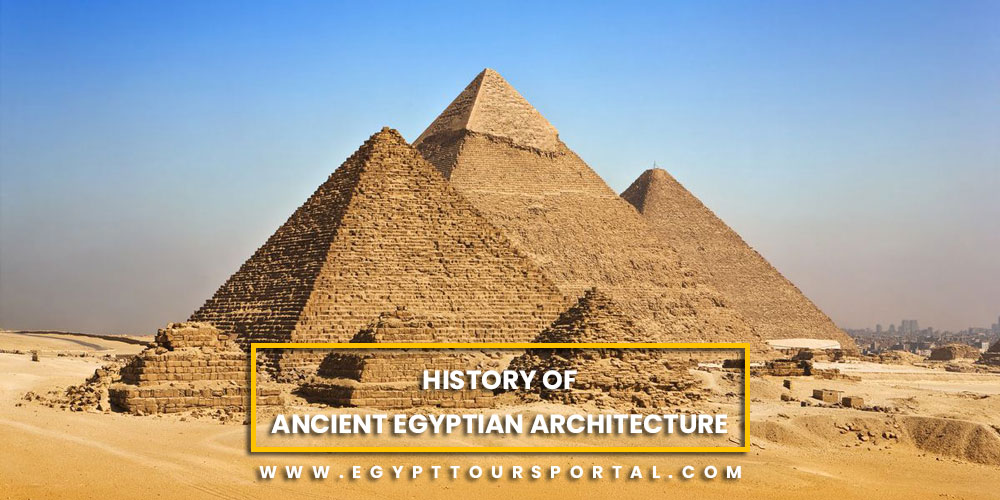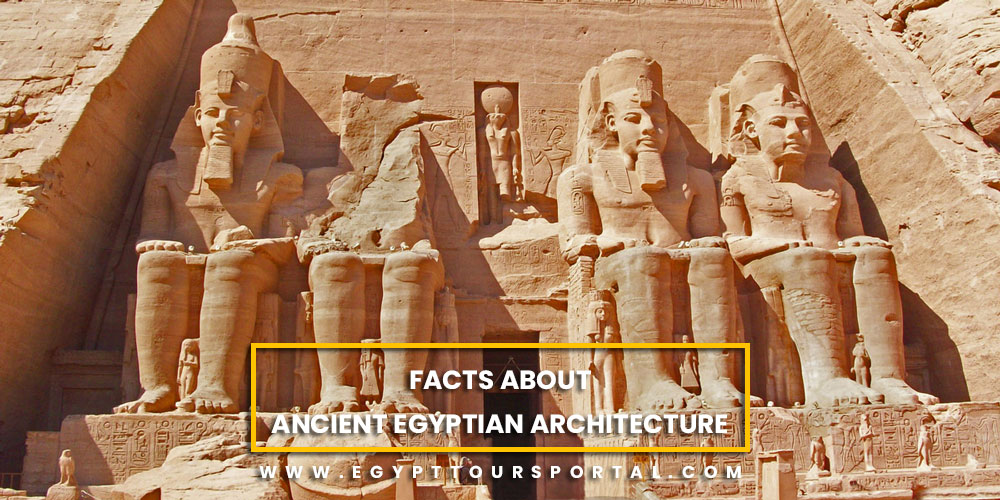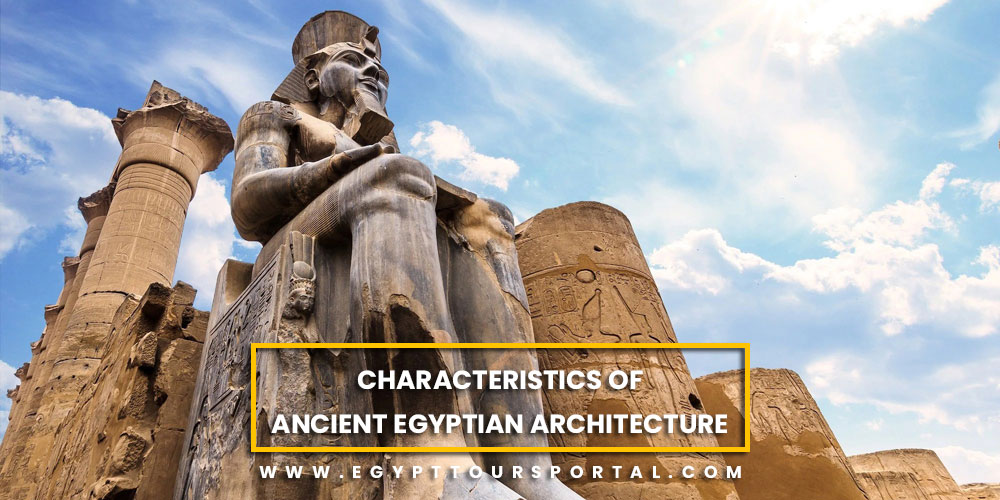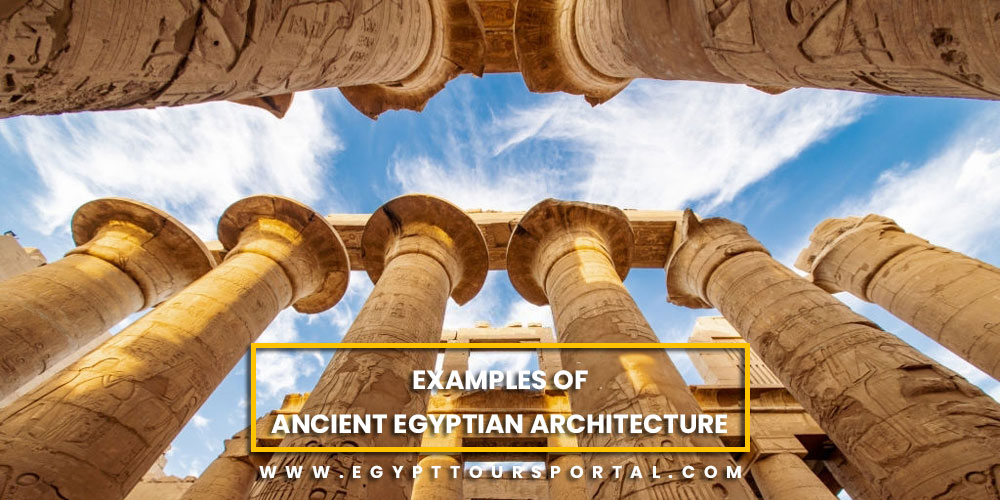- Local Time: 05:54 PM
- Weather: 34 ℃ / 94 ℉

The art of Architecture is the most synonymous and familiar aspect of ancient Egyptian civilization. The ancient Egyptian architecture tells the stories of the Egyptians and showcases their powerful relationship connection with their lands and gods.
Egyptians were driven by fundamental characteristics which also shaped the ancient Egyptian culture, they believed in the concept of an eternal afterlife, on the principles of theocracy whose Pharaoh was worshipped like a god, and on the representation of their religious dogma and belief system.

The obelisks are large stone monuments with four-sided and a tapered top that reflect the relationship between the gods and the people that were raised in pairs. Constructing the obelisks required certain skills like quarrying, carving, transporting, and the employment of a massive workforce. Mastering these skills made Egypt ready to change the face of architecture by creating the pyramids.
In 3100 BC, many important elements saw the light for the first time like the unification of Egypt, the common usage of hieroglyphs, and the creation of the Mastabas which is a one-story brick box with burial tombs that were used in the construction of the step pyramid of Djoser in 2630 BC which was designed by one of the greatest architects in ancient Egyptian history Imhotep.
It reflected the incredible elements of symmetry, balance, and grandeur which represent the core values of ancient Egyptian culture. The step pyramids showcase how far the Egyptians were advanced in their understanding of architectural design and construction which acts as an important link between the past and future of the pyramid constructions.
In the Old Kingdom of Egypt (2686-2181 BC) was duped as the golden age of architecture because of the number of pyramids constructed in this period. Everything began due to the innovations of Imhotep, a wave of Pyramid constructions swiped the land. King Sneferu (2613-2589) of the 4th dynasty constructed the first pyramid of Meidum initiated the golden age of the old kingdom.
his son and successor Pharaoh Khufu (2589-2566 BC) continued his legacy and directed his administration in constructing the great pyramid of Giza the last intact seven wonders of the ancient world, it was built by paid workers to be the final resting place of the pharaohs.
The architects of the old kingdom created smooth-sided pyramids out of limestone which aligns with the sun to make it easier for the pharaoh's soul to ascend to the heavens to join their rightful place with the gods. The art of architecture reached a high point at Giza, Dashure, and Saqqara through the construction of the pyramid which interior was decorated with sculptures, statues, and paintings that showcased the beauty of ancient Egyptian art.
In the Middle Kingdom of Egypt (2055-1650 BC), there was a cultural shift due to the control of the monarchs and the priest which led to the decline of the artworks and the architecture of the pyramids in both size and quality and the rise of enchanting chapels, rock-carved tombs, decorative columns and painted walls. This era is able to showcase the brilliance and beauty of ancient Egyptian architecture better than anyone and the style reflected the universe and the origin of creation by Atum.
In the New Kingdom of Egypt (1550-1070 BC) the construction of the temples, rock-cut tombs, and wall reliefs was the most dominant. In the new kingdom, the most celebrated architectural achievements were constructed like the Hatshepsut temple, Luxor temple, Karnak temple, Abu Simbel, and the valley of the kings.
The most celebrated architectural achievements of this era included the great stone temples dedicated to the numerous gods of ancient Egypt. The design includes a colossal gateway, a colonnaded courtyard, a hall of columns, and a shrine chamber. The new architectural design of columns, pillars, and capitals were based on plant motifs, as was mural decoration.
The Ptolemaic Era (332 -30 BC) The Greek dynasty assumed the role of the pharaohs after the city of Alexandria was built and architecturally designed to reflect the majestic beauty of the Greek empire in 331 BC. During this period the Greek influence began to manifest in the ancient Egyptian designs as it showcased in the Philae temple and Edfu temple after they also embraced the ancient Egyptian beliefs.
This process continued by the Romans as they added architectural techniques and materials of their own. These monuments continued to inspire travelers from all over the world, defying the passage of time and the classic notion of architecture.

And with their incredible architectural designs, building materials and gigantic labor farce were able to immortal structures like Giza pyramids and Sphinx which became the most recognizable symbol about ancient Egypt and for the purpose of honoring the gods like Osiris, Isis, Horus, Ra, and countless others so various great temples were constructed in the great cities of Luxor and Aswan which manifest the beautiful spirit of ancient Egyptian art.
The ancient Egyptian monotheism and particularly the myth of creation which states Atum created the universe from his primordial mound at the beginning of time, played a vital role in choosing the shape, design, and role of these structures. The ancient Egyptian language has no word for "architect" so each master-builder was known as "director of the entire king's works." which shows that they held a special position of trust with the king and frequently acted as his vizier.

These mud-brick and stones were used for the construction of everything such as royal palaces, fortified buildings, outbuildings, temple walls, and countless others un till the rise of stone construction in the 2nd dynasty (2890-2670 BC). These early buildings were oval before the creation of bricks and after they became rectangular with a vaulted roof with a garden and a courtyard.
Most of the constructions like the temples and the pyramids were built near the Nile river because the building materials were transported by river and they contained a flat roof supported by external walls and columns decorated with magical Hieroglyphs for the purpose of protection or recording historical events. As civilization advanced, the community gathered together for protection and gave rise to cities like Memphis and Thebes which elevated the art of architecture to new heights and also The appearance of windows and doors.
The traditional houses of the ancient Egyptians were created using mud-bricks and timber with occasional stone rests for thresholds or column bases and the palaces of the nobles was constructed with two entrances, two receiving halls, two throne rooms in order to maintain symmetry and balance while representing both upper and lower in the design.

There is no better place on earth that can reflect the true soul of ancient architecture than the enchanting monuments of Egypt. Don't miss the chance to be in the land of wonder and beauty through our Egypt holiday packages from the UK or onboard a Nile river cruise and sail on the holy spirit of the past.
Cairo Stopover Tour Cairo stopover tour is the ultimate portal for every British traveler to discover th...
Day Tour in Cairo and the Pyramids For British Travelers Day Tour in Cairo and The Pyramids is a smashi...
Day Trip to Pyramids from Cairo for British Travelers Day trip to the Pyramids from Cairo is a brilliant...
Day Trip from Luxor to Cairo by Plane For British Travelers Day trip from Luxor to Cairo by plane is a ...
Egypt Tours Portal prides itself on being the best travel agency in Egypt as proven by our numerous positive reviews.
This review is a late, but I had to provide some feedback. My brother and I went on vacation in October 2022 and booked with Egypt Tours Portal. With on-line sc...Read More
My fiancé and I booked a private 5 day tour of Egypt with ETP starting in Cairo followed by Aswan, Abu Simbel and Luxor. We just got home and continue to talk ...Read More
This was the trip of a lifetime that I was able to have with my eldest son - an absolutely amazing experience. To be able to actually see the places and artifac...Read More
Highly recommend this tour company!!! Our guides, Moses, Mahmoud, Magred and Mohamed were exceptional, their knowledge of the history is more that accurate, the...Read More
Egypt Tours Portal is an excellent company to use to arrange your visit to Egypt. They work with phenomenal guides (we had Mahmoud Nour in Upper Egypt and Mohse...Read More
It was an absolutely amazing trip where we saw some of the most historical and beautiful sights in Egypt. Our tour guide Mohamed Elshemei was extremely knowledg...Read More








